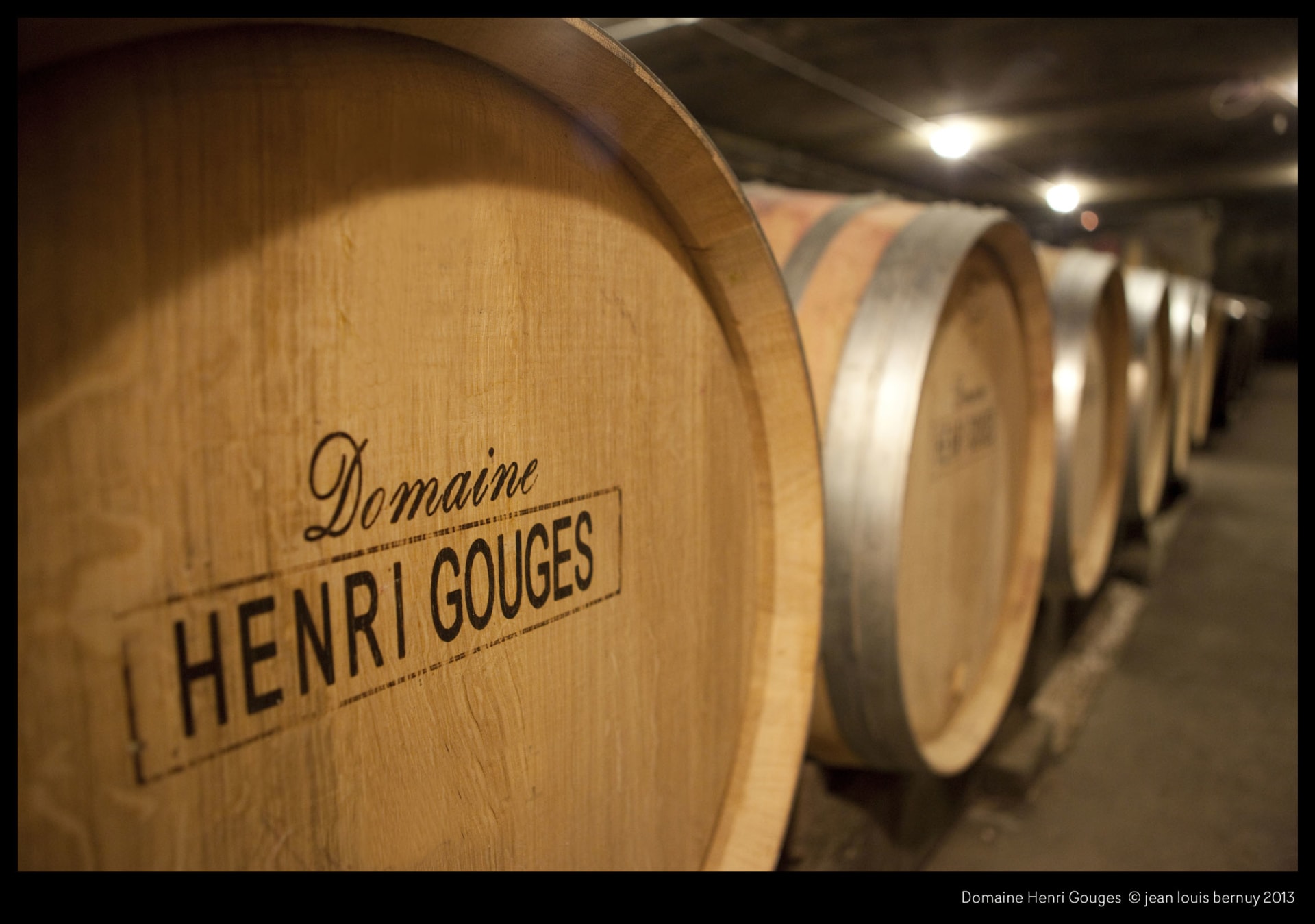Domaine Henri Gouges Nuits-Saint-Georges (375ML half-bottle) 2017
-
Wine
Spectator -
Wilfred
Wong -
Jeb
Dunnuck



Product Details
Your Rating
Somm Note
Winemaker Notes
A lovely, brilliant crimson color. A very earthy Nuits nose with some vanilla bean, too. On the palate, smoky, velvet-textured fruit without any tannin, but acids take their place, so the wine is nicely balanced. Not heavy, but a very elegant Pinot expression at the end.
Professional Ratings
-
Wine Spectator
Exotic scents of violet, raspberry and wild cherry mark this juicy red. Vivid and fruity, yet backed by a baseline of firm tannins. Shows fine balance and a lingering aftertaste of red berries and mineral. Best from 2022 through 2038.
-
Wilfred Wong of Wine.com
COMMENTARY: The 2017 Domaine Henri Gouges Nuits-Saint-Georges shows how delicate, firm, and well-built NSG can be. TASTING NOTES: This wine comes right at you with plenty of power and excellent finesse. Pair its strength with a juicy, grilled ribeye. (Tasted: May 6, 2019, San Francisco, CA)
-
Jeb Dunnuck
The village 2017 Nuits-Saint-Georges from Gouges is a beautiful wine that shows the warmer, sun-kissed style of the vintage nicely while still having plenty of crisp, almost crunchy fruit. Notes of red cherries, strawberries, and cranberries give way to more spice and hints of spring flowers with time in the glass, and it hits the palate with medium-bodied richness, nicely integrated acidity, light tannins, and terrific overall balance. This is a lovely Village level wine that has impressive richness as well as length. It’s going to evolve nicely for 10-15 years.
Other Vintages
2020-
Wine
Spectator -
Jasper
Morris
-
Wine
Spectator
-
Wine
Spectator
-
Wine
Spectator




The creation of Domaine Henri Gouges was the culmination of 400 years of family grape farmers, and it is, in many minds, the top domaine in Nuits-Saint-Georges. Henri formed the domaine in 1920 but was soon discouraged with selling the fruit to négociants. He envisioned a better quality wine, and by 1933, he was producing, bottling, and selling directly. He, along with the Marquis d’Angerville from Volnay, was at the forefront of battles against fraud in Burgundy in the 1920s. In the 1930s, Monsieur Gouges was one of the people charged with the job of delineating the crus in Burgundy for the Institut National d’Appellation d’Origine, and he was a member of that regulatory body at its outset. Since the beginning, the domaine has remained an undivided family property. In 1967 Henri’s two sons, Michel and Marcel, succeeded him and added to the holdings of the estate. Each of them handed leadership over to one of their sons to bring the domaine to the next stage. Pierre and Christian began the modernization of the vineyards and the winery, which they have now turned over to Pierre’s son, Gregory, and his cousin, Antoine. While the house style has evolved, the main focus is the better reflection of the terroir in the fruit through organic viticulture. They believe that healthy vines produce quality fruit and thus more expressive terroir-driven wines.

Thin-skinned, finicky and temperamental, Pinot Noir is also one of the most rewarding grapes to grow and remains a labor of love for some of the greatest vignerons in Burgundy. Fairly adaptable but highly reflective of the environment in which it is grown, Pinot Noir prefers a cool climate and requires low yields to achieve high quality. Outside of France, outstanding examples come from in Oregon, California and throughout specific locations in wine-producing world. Somm Secret—André Tchelistcheff, California’s most influential post-Prohibition winemaker decidedly stayed away from the grape, claiming “God made Cabernet. The Devil made Pinot Noir.”

Inhabiting the bottom end of the northern half of the Côte d’Or, Nuits-St-Georges is a busy, market-driven town and home to many of Burgundy’s negociants. It is also the largest town in the Côte d’Or after Beaune and contributes "nuits" to the name of Côte de Nuits (i.e., the northern half of the Côte d’Or).
The appellation itself is divided into two parts, where in the north it directly borders Vosne-Romanée, the southerly end is the commune of Prémeaux. There are no Grands Crus in this village, though it does have a large number of Premiers Crus.
The best Nuits-St-Georges Pinot Noir are layered with cherry, plum, underbrush and sandalwood. The fruit is sweet, the wine energetic, and the finish long and lush.
